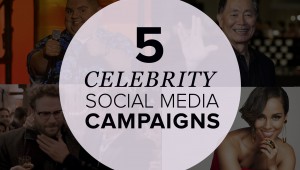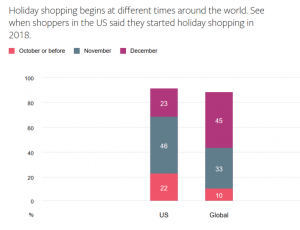Since the beginning of this year, Facebook has put more emphasis on their advertising platform. If businesses want to sell their products and be seen on people’s news feeds, they need to either change their Facebook content strategy to show up organically or spend money on Facebook ads.

Facebook has a number of ways you can advertise on their platform and has a very intuitive advertising solution to help you effectively engage your audience, while achieving your business objectives.
To give you a hand we’ve put together this beginner’s guide to Facebook advertising, to show those of you just dipping your toes into the world of social media advertising, how to advertise on Facebook.
What is Facebook advertising?
Facebook advertising allow businesses to pay Facebook to show custom ads or content to a specific target audience, with costs varying based on the reach and number of engagement the ad receives. Facebooks ads can appear in your target audience’s News Feed on desktop, News Feed on mobile, and in the right column of Facebook on desktop.
When you choose to advertise on Facebook you’re provided with the opportunity to hone in on your audience, which provides you with the opportunity to gain insight about your audience. The data you collect through Facebook ads then allows you to improve your ad targeting for a more efficient and effective advertising experience.
How to advertise on Facebook in 7 easy steps
Step 1: Create a Facebook Business Page
In order to advertise on Facebook you first must have a Facebook Business Page.
To create a Page:
- Go to facebook.com/pages/create
- Then choose a page category

- Click Get Started and follow the on-screen instructions
When creating a Facebook page an important step is determining the category of the Page. Choosing the appropriate category that best describes the nature of your business will help people find your Page on the network easier. The category name is displayed on your page, so it’s one of the first things a user sees when they visit your Page.
Best practices to follow when creating a Facebook page:
- Fill out your Page info in full detail. Doing this will not only help people understand what your Page is about, but as well as your business. Make sure to include: a link to your website, links to your other social network profiles, your hours of operation, phone number, and address.
- Include a relevant Facebook Profile Photo, as well as a creative Facebook cover photo. These images are the display window into your brand. They are the first thing a user sees when they visit your Page, so make sure you choose wisely because it may be the deciding factor between their choice to explore further or to leave.
- Have a Facebook Page strategy. Just like any other social network strategy, your Facebook Page must have one too. It’s important to declare what the mission of your Facebook Page is, its tone of voice, as well as the kind of content that will be posted on your Facebook Page. Creating a plan will allow you to achieve success on Facebook.
Step 2: Create goals for your Facebook ads
Before choosing what kind of Facebook ad you’re going to use it’s important to create goals for your ads. This is step is important because you need to make sure you’re spending your money wisely, while achieving your business or marketing goals. Create S.M.A.R.T. goals for your Facebooks ads.

When you create specific, measurable, attainable, relevant, and time based goals for your Facebook ads you’ll be able to achieve a better return on investment. For example, a goal can be: Acquire 100 registrants for the upcoming Home Improvement Conference in 2 months. This goal will now guide your Facebook ad strategy and help you choose the right type of Facebook ad.
Step 3: Choose an objective for your campaign
Now that you have created your Facebook advertising goals, you can then translate those goals into objectives for your campaign. The first step to creating your ad is to choose an objective.

If a goal you have is to acquire registrants for an upcoming event, the Facebook ad objective you would choose is to “Raise attendance at your event.” Or if you want to drive people to your blog then you would choose the objective, “Send people to your website.”
Step 4: Choose your target audience and ad spend
This step determines how effective your Facebook ad will be. You can target ads based on: location, age, gender, language, interests, and behavior.

You can even create custom audiences to reach people who already know your business, or to remove them from your ad’s target audience so you can reach a new audience. You can create a custom audience through a customer list, website traffic, or app activity.

After you’re done choosing your target audience you can then choose how much you want to spend on your ad. In this part, you want to make sure your ad spend is efficient while being effective. The ad budget you set is the maximum amount you want to spend. If you choose to have a daily budget, the amount you enter will be the maximum amount you’ll spend each day. If you do lifetime budget, the amount you enter is the maximum you’ll spend during the lifetime of your ad.
You then choose to bid for an objective: clicks or impressions. This will determine how you will pay and who your ad will be served to. For example: if you optimize for the Page like objective, you’ll be charged when your ad is served to people more likely to like your Page. Then you choose when you want your ad to run under ad scheduling. If you choose the lifetime budget route you choose specific hours and days of the week when you want your ad to run.
Choosing to run your ad on a schedule is the most efficient way to spend your ad budget wisely, this means that you are only serving your ad when your target audience is most likely on Facebook. For example, if you chose to target a specific region, you want to make sure you’re scheduling your ad when they are awake, this will allow you to make sure your ad will be seen by the people you want to target.

Step 5: Choose how you want your ad to look
This is the fun part of advertising on Facebook, creating the ad. In this step you have the option to choose how your ad will look, you can have one image or multiple images (up to 5).

Then you need choose the text that will accompany the image. Your headline can only be 25 characters, so make sure your copy will intrigue people to click on it. The text that will accompany the post is only 90 characters long, which means your copy needs to effectively portray what the content is about.
Afterwards, you need to choose the placement of your Facebook ad. Will it be on people’s Desktop news feed, mobile news feed, right column, or audience network.

Step 6: Place your order
On the bottom right hand corner, click on the green button that says place order once you’re ready for your ad to be reviewed. You’ll receive an email from Facebook once your ad has been reviewed and approved.

Step 7: Remember these 3 Facebook advertising best practices
1) Always determine your objectives before you start
It’s important to know what the purpose of your Facebook ad is before you start spending on advertisements. Understand whether or not it’s for brand awareness, conversions, video views, etc. Each action made by your audience on your Facebook ad costs money so make sure you solidify your objectives before spending money on ads.
2) Be specific on your audience targeting
Facebook houses millions, if not billions of data points. Take the time to get very specific in your audience targeting to ensure your ad will appear where the people you want to see it will be.
3) Rotate your ads regularly
To avoid ad fatigue, rotate your Facebook ads regularly. What this means is that when people start to see your ad too many times, they get bored of it and stop clicking. Unfortunately, when your click through rate starts to drop Facebook penalizes you, driving up your cost per click (CPC), and making likes, comments, and clickthroughs more expensive. This affects both acquisition and engagement campaigns. To avoid this, rotate your ads every 3 to 5 days.
What we’re trying to say is…
Facebook advertising is a complex process that requires effective planning, testing, and measuring. With the above 7 steps, you can begin testing out the waters and watch your Facebook advertising skills grow.
You can now embark into the world of Facebook advertising knowing how you can make the most of your money and be one of the many advertisers competing on people’s news feeds. If done correctly, Facebook ads can prove to be incredibly powerful for your business.
(206)








